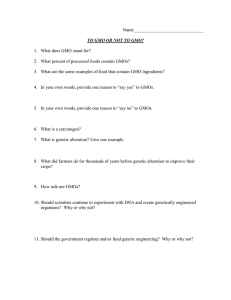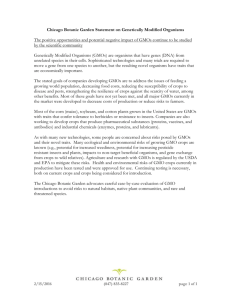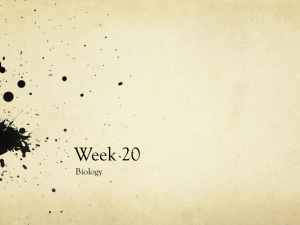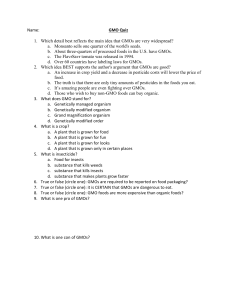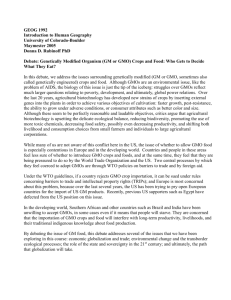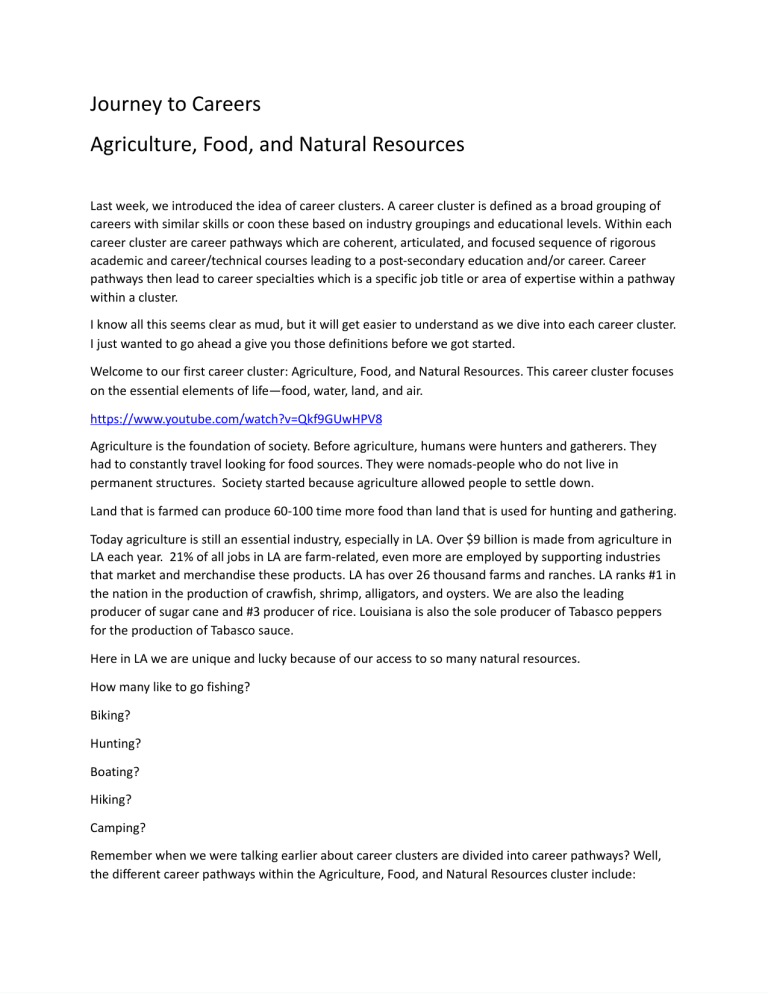
Journey to Careers Agriculture, Food, and Natural Resources Last week, we introduced the idea of career clusters. A career cluster is defined as a broad grouping of careers with similar skills or coon these based on industry groupings and educational levels. Within each career cluster are career pathways which are coherent, articulated, and focused sequence of rigorous academic and career/technical courses leading to a post-secondary education and/or career. Career pathways then lead to career specialties which is a specific job title or area of expertise within a pathway within a cluster. I know all this seems clear as mud, but it will get easier to understand as we dive into each career cluster. I just wanted to go ahead a give you those definitions before we got started. Welcome to our first career cluster: Agriculture, Food, and Natural Resources. This career cluster focuses on the essential elements of life—food, water, land, and air. https://www.youtube.com/watch?v=Qkf9GUwHPV8 Agriculture is the foundation of society. Before agriculture, humans were hunters and gatherers. They had to constantly travel looking for food sources. They were nomads-people who do not live in permanent structures. Society started because agriculture allowed people to settle down. Land that is farmed can produce 60-100 time more food than land that is used for hunting and gathering. Today agriculture is still an essential industry, especially in LA. Over $9 billion is made from agriculture in LA each year. 21% of all jobs in LA are farm-related, even more are employed by supporting industries that market and merchandise these products. LA has over 26 thousand farms and ranches. LA ranks #1 in the nation in the production of crawfish, shrimp, alligators, and oysters. We are also the leading producer of sugar cane and #3 producer of rice. Louisiana is also the sole producer of Tabasco peppers for the production of Tabasco sauce. Here in LA we are unique and lucky because of our access to so many natural resources. How many like to go fishing? Biking? Hunting? Boating? Hiking? Camping? Remember when we were talking earlier about career clusters are divided into career pathways? Well, the different career pathways within the Agriculture, Food, and Natural Resources cluster include: ● ● ● ● ● ● ● Agribusiness Systems Animal Systems Environmental Service systems Food Products and Processing Systems Natural Resource Systems Plant Systems Power, Structural, and Technical Systems Career Specialties include: ● ● ● ● ● ● ● ● ● ● ● ● Veterinarian Assistant Landscape Contractor Equine Care and Training Poultry Manager Aqua culturalist Forestry Ranchers Farmers USDA Graders Plant Pathologists Biochemist Agriculture Bankers What is a GMO? Genetically modified organisms (GMOs) are living organisms whose genetic material has been artificially manipulated in a laboratory through genetic engineering. This creates combinations of plant, animal, bacteria, and virus genes that do not occur in nature or through traditional crossbreeding methods. Most GMOs have been engineered to withstand the direct application of herbicide and/or to produce an insecticide. However, new technologies are now being used to artificially develop other traits in plants, such as a resistance to browning in apples, and to create new organisms using synthetic biology. Despite biotech industry promises, there is no evidence that any of the GMOs currently on the market offer increased yield, drought tolerance, enhanced nutrition, or any other consumer benefit. Visit the What is GMO page for more information and a list of high-risk crops. Are GMOs safe? In the absence of credible independent long-term feeding studies, the safety of GMOs is unknown. Increasingly, citizens are taking matters into their own hands and choosing to opt out of the GMO experiment. Are GMOs labeled? Sixty-four countries around the world, including Australia, Japan, and all of the countries in the European Union, require genetically modified foods to be labeled. Canada does not require any GMO labeling. GMOs are not currently labeled in the United States. However, the National Bioengineered Food Disclosure Standard (NBFDS) was published in the Federal Register on December 21, 2018. This law, which you may have heard called the DARK Act, is the start of mandatory GMO labeling in the United States. It means that some—but not all—products containing GMOs will have to be labeled by 2022. In its current form, categorical exemptions prevent this law from delivering the meaningful protections Americans deserve. Learn more. Which foods might contain GMOs? Most packaged foods contain ingredients derived from corn, soy, canola, and sugar beet — and the vast majority of those crops grown in North America are genetically modified. 1 To see a list of high-risk crops, visit the What is GMO page. Animal products: The Non-GMO Project also considers livestock, apiculture, and aquaculture products at high risk because genetically engineered ingredients are common in animal feed. This impacts animal products such as: eggs, milk, meat, honey, and seafood. Processed inputs, including those from synthetic biology: GMOs also sneak into food in the form of processed crop derivatives and inputs derived from other forms of genetic engineering, such as synthetic biology. Some examples include: hydrolyzed vegetable protein corn syrup, molasses, sucrose, textured vegetable protein, flavorings, vitamins yeast products, microbes & enzymes, flavors, oils & fats, proteins, and sweeteners. How do GMOs affect farmers? Because GMOs are novel life forms, biotechnology companies have been able to obtain patents to control the use and distribution of their genetically engineered seeds. Genetically modified crops therefore pose a serious threat to farmer sovereignty and to the national food security of any country where they are grown. What are the impacts of GMOs on the environment? More than 80% of all genetically modified crops grown worldwide have been engineered for herbicide tolerance.2 As a result, the use of toxic herbicides, such as Roundup®, has increased fifteenfold since GMOs were first introduced.3 In March 2015, the World Health Organization determined that the herbicide glyphosate (the key ingredient in Roundup®) is “probably carcinogenic to humans.” Genetically modified crops also are responsible for the emergence of “superweeds” and “superbugs,” which can only be killed with ever more toxic poisons such as 2,4-D (a major ingredient in Agent Orange).4,5 Most GMOs are a direct extension of chemical agriculture and are developed and sold by the world’s largest chemical companies. The longterm impacts of these GMOs are unknown. Once released into the environment, these novel organisms cannot be recalled. High Risk -alfalfa, canola, corn, cotton, papaya, soy, sugar beet, yellow summer squash-zucchini, animal products, microbes and enzymes, potato Low Risk-Lentils, spinach, tomatoes, sesame seeds, avocados Though there are only several GM crops that are widely available, they are commodity crops that often get further processed into a variety of ingredients. These high-risk ingredients are typically present in packaged products as: Amino acids, alcohol, aspartame, ascorbic acid, sodium ascorbate, citric acid, sodium citrate, ethanol, flavorings (“natural” and “artificial”), high-fructose corn syrup, hydrolyzed vegetable protein, lactic acid, maltodextrins, molasses, monosodium glutamate (MSG), sucrose, textured vegetable protein (TVP), xanthan gum, vitamins, vinegar, yeast products
